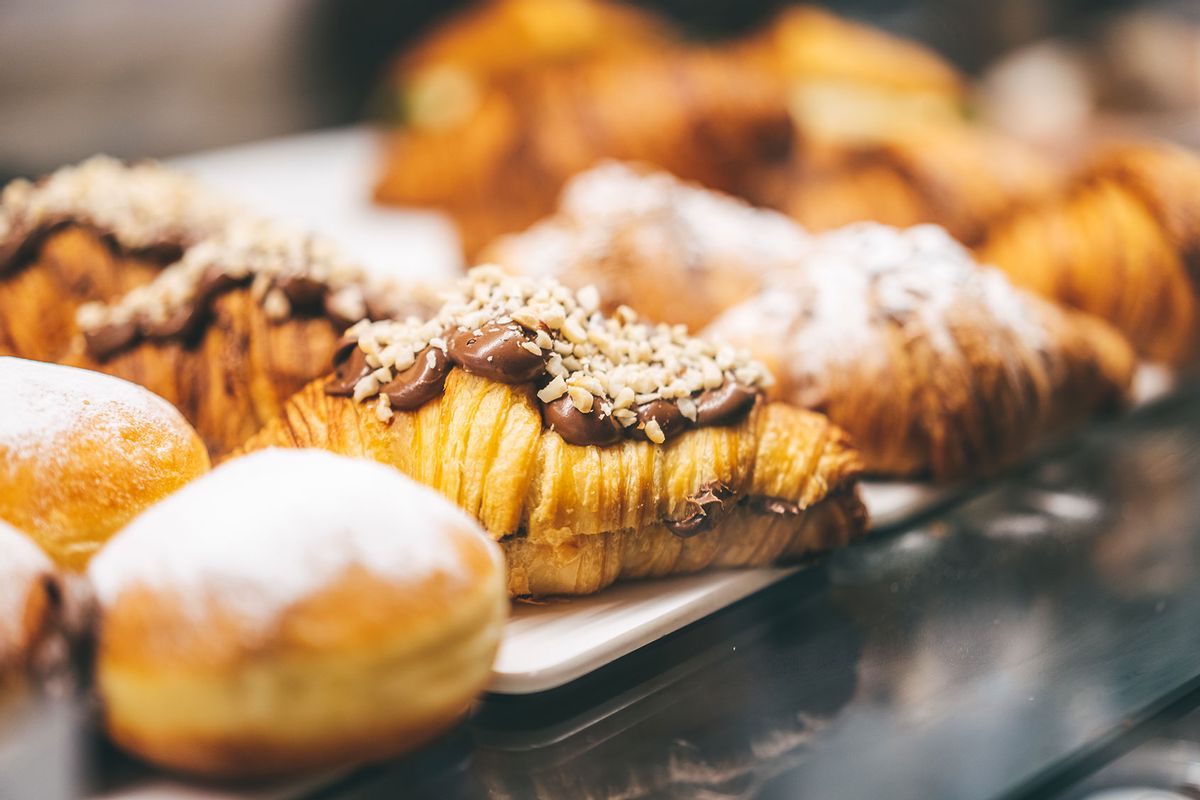The fancy croissant obsession continues over a decade after cronuts took the internet by storm

When Dominique Ansel debuted the Cronut in May 2013, people went berserk.
The croissant-donut hybrid caught the attention of many around the world who flocked to Ansel’s Soho-based bakery to get their hands on the pastry. Celebrities even fought the masses to enjoy their fair share of cronuts. Keri Hilson proudly flaunted that she got not one, but six cronuts in an infamous TMZ video. Anderson Cooper tried to get a batch delivered for his birthday, but was ultimately unsuccessful in his efforts. And Kelly Ripa had what can only be described as an out of body experience while sampling one on live television.
“I thought it was the line to the Apple Store,” Ripa said while talking about the never-ending line outside of Dominique Ansel Bakery during an episode of “Live! with Kelly and Michael.”
Ansel’s Cronut was conceived after the pastry chef was told he didn’t have doughnuts on his menu. Although Ansel had tried doughnuts before, he was more familiar with a pastry he’d been eating since he was a child in rural France — the croissant. So, he decided to mesh the two desserts, using his expertise in French baking to unite a classic pâtisserie and an American breakfast staple in holy matrimony.
As with any new invention, the cronut wasn’t perfect from the get-go. It took Ansel more than three months and more than ten variations to perfect his recipe. The cronut officially became a major hit when Hugh Merwin wrote a glowing review of the dessert in New York Magazine’s food and restaurant blog, Grub Street. The cronuts, Merwin said, were “a bold step forward for pastry.”
The Cronut’s legacy still runs strong today. Pastry chefs around the world have taken on the challenge of creating their own fancy hybrid croissant pastries and succeeded. Many of these desserts managed to go viral in the same vein as their predecessor.
Take for example the Crioche, a combination of two classic pastries, the brioche and the croissant. The Crioche’s creator remains a mystery today — La Cucina Italiana credits the pastry to Italian pastry chef Marco Pedron, while Broadsheet says the pastry may have been invented by French chef Yves Scherrer. Regardless, the Crioche is a common sight across bakeries both near and far. They are a staple menu item at Carlo Cracco’s Ristorante Cracco in Milan, Italy, and a must-have at Badolina Bakery & Cafe in Houston, Texas.
What makes the Crioche so special is its use of eggs in the recipe. Brioche, a traditional French bread, calls for a generous amount of butter and eggs. Croissants, on the other hand, call for copious amounts of butter but no eggs — at least when making the classic croissant recipe. That means the Crioche dough can either call for eggs or omit them entirely. Each recipe is customizable and varies from chef to chef.
“It’s neither a croissant nor a brioche. It’s a crioche because before the dough is folded with butter, it’s made with butter and egg yolk,” chef Pedron told La Cucina Italiana. Pedron’s recipe includes brioche-style dough that’s then styled and laminated using traditional techniques for making croissants. He adds vanilla beans, honey, orange zest and sugar syrup to his pastries to heighten their flavor profile.
Crioche can be served sweet or savory. Maison Daniel in San Francisco, California, adds ham and cheese to their Crioche, per Merci SF. Maker+Baker in Sussex, England, coats their Crioche in cinnamon and sugar for sweetness and a hint of crunchiness.
Alongside the Crioche is the Cruffin, a portmanteau of the croissant and the muffin. There’s also the Crogel, the world’s first croissant and bagel hybrid that’s only sold by the Connecticut-based grocery store and bakery Stew Leonard’s. And there’s the infamous Doissant, which is D.C.’s attempt to prove that the nation’s capital is not like other girls (spoiler alert: it is).
Want more great food writing and recipes? Subscribe to Salon Food’s newsletter, The Bite.
Making handmade croissants is already hard enough. But making handmade croissants along with another complex pastry is pretty darn difficult. When it comes to the Cronut, frying croissant dough is not something every renowned pastry chef can achieve:
“It’s not pretty,” explained Merwin. “Even if the laminated layers don’t separate instantly and part ways in the hot oil six ways to Sunday, chances are that yeast-leavened dough will have a lumpy, sad, and uneven ascent before it ever gets to the golden brown stage.”
Perhaps that’s why croissants are the go-to pick for hybrid pastries. Each creation poses several hurdles that only a handful of ambitious chefs are willing to tackle. If they are successful, the resulting gratification and stardom are priceless. These pastries, in their essence, are a work of art that people want to eat and admire.
“It’s still difficult to describe the success of the Cronut. I think it’s a mix of so many things together that work perfectly. Everyone’s had a doughnut before. Everyone’s had a croissant before,” Ansel told Condé Nast Traveler back in 2016. “But there’s always a different source of inspiration when it comes to pastry.
“It can sometimes be color, sometimes an ingredient, sometimes a technique, sometimes a story. But it all comes together around the same thing when it comes to creating a new product, and it’s to do something good and tasty and something that people remember.”
A little over a decade after they took the internet by storm, cronuts (and their hybrid cousins) remain good, tasty and memorable.
Read more
about baked goods:

